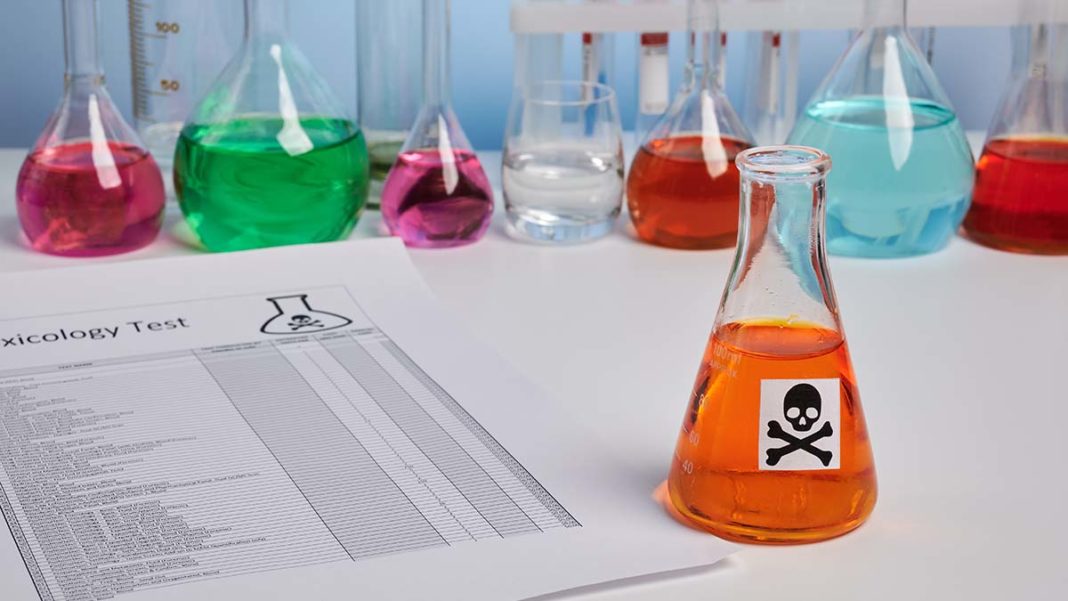CANADA—What you don’t know can hurt you. A new report from the Canadian Centre on Substance Use and Addiction (CCSA) indicates that unexpected substances found in the unregulated drug supply point to an increasingly toxic drug supply across Canada.
The report is part of the project called the Community Urinalysis and Self-Report Project (CUSP). The precedent behind it is that the unregulated drug supply is unpredictable and that the presence of substances that are of unknown type of unknown quantity are causing a lot of harm to people who use drugs (PWUD), mainly through overdoses, injury and death, said Emily Biggar, research and policy analyst with CCSA.
“CUSP aims to improve what we know about the contents of the drug supply in order to inform policies and programs that reduce harms associated with its unpredictability,” explained Ms. Biggar. “We do this by working in partnership with different harm reduction organizations to collect and compare two kinds of data from people who are accessing harm reduction services in these jurisdictions.”
The two kinds of data are what people report consuming in the past three days, which is collected via survey, and then what substances are detected through urinalysis. In this way, researchers are able to report on some findings across Canada about overall trends in the reported use and the detected use of unregulated drugs, and also how the two align for each participant. “For example, if fentanyl is detected for this participant, did that participant report using it in the past three days or not, which allows us to get at whether the usage was expected or unexpected,” Ms. Biggar said.
Unexpected use occurred in every region and for virtually every substance examined. Unexpected use, or the unpredictability of the drug supply, occurred in every region although the drug use trends in each were unique. “The unpredictability was the common thread,” she noted.
Karla Ghartey, representative for the Sudbury volunteer-led peer support and outreach group STOPS (Sudbury Temporary Overdose Prevention Society), said they are seeing a high level of toxic drugs and it’s been gradually getting worse. “Are we seeing mixtures of toxic drugs? Yes,” said Ms. Ghartey. “Has that been increasing over time? Yes, absolutely.”
Even pre-COVID, there was a concern that the rates of overdose and fatal overdose were increasing dramatically. STOPS was operating prior to the start of the pandemic and Ms. Ghartey said that COVID has exacerbated things to a large degree for a number of reasons. Less services were available, especially in-person services and there was more isolation because of Covid protocols. There were also increasing amounts of fentanyl on the streets.
Originally, she said, the heroin was being replaced with fentanyl. “But over time, it’s also being mixed with a number of other things, like benzodiazepines and things like chemically manufactured, stronger drugs that we’ve never seen before. Can it be mixed with uppers? Absolutely. Can people’s uppers be mixed with downers? You think you’re taking meth but it’s a mixture of meth and fentanyl and benzos that you didn’t anticipate. Or maybe you know you’re taking a cocktail but you don’t know the concentrations of what’s in the cocktail, which is also what makes it really dangerous.”
STOPS co-founder Marie Pollock obtains samples of street drugs in the city and sends them to Toronto for testing, posting the results on the group’s Facebook page. July drug testing of three samples revealed the presence of caffeine, dimethyl sulfone (a dietary supplement), fentanyl and an unknown substance suspected to be a fentanyl analog. One of the three samples contained benzodiazepine and one contained 4-Anilino-Box-Piperidine. This was the first time Ms. Pollock had seen that chemical since she has been sending drugs for testing. The manufacturer of 4-Anilino-Box-Pipidine describes it as “an analytical reference standard that is structurally similar to known opioids.” A warning says this product is intended for research and forensic applications and is not for human or veterinary use.
One example of a commonality in CUSP findings was related to benzodiazepine use, where they found use was unexpected among one in three participants overall and up to as many as three in four participants in some regions.
Data for each region before and after a certain time period is not available but the trends with respect to unexpected benzodiazepine, corroborates other data sources such as drug checking services, which also show an increasing presence of benzodiazepine or other potentially harmful substances like fentanyl or its analogs, Ms. Biggar said. “It’s certainly consistent with the picture of drug use trends.”
“When we have substances that are hyper-potent, particularly with these synthetic opioids like fentanyl, there’s certainly an increased risk of overdose, especially if the person is not necessarily expecting to consume it,” said Ms. Biggar. “This can result in death, which we are seeing increasing to unprecedented rates in some communities, especially after the pandemic started.”
There is also the risk of developing unknown tolerance with unexpected substances, she added. “If they stop, the person might start experiencing withdrawal without necessarily expecting to. Benzodiazepines is actually a really good example of that. Using benzodiazepines with opioids not only increases the risk of overdose but it also makes those overdoses more difficult to reverse and there may be a build up of tolerance which may lead to withdrawal symptoms for that person, so it’s a difficult situation.”
The drug supply is expected to continue to evolve and new substances that may carry risks to PWUD may pop up, so it will be important to continue monitoring through drug checking services or projects like CUSP and centralizing and harmonizing this data and communicating it back to PWUD and service providers. Beyond that, Ms. Biggar said, “In terms of actually addressing the issues that are addressing the toxicity of the supply, there really is a need for measures across the sector of harm reduction, treatment and prevention. There really is no solution alone that will address the issue.”
PWUD can rely on the harm reduction tools that are available to them. For example spotting, where you don’t use alone, or if that’s not possible, the Canadian national Never Use Alone overdose prevention number is 1-888-688-6677. Some communities have established safe consumption sites or offer safe supply. These tools really do depend on those services being available and accessible in the community and can make it really challenging to address the risk when the root problem is the toxicity of the supply, Ms. Biggar said.





